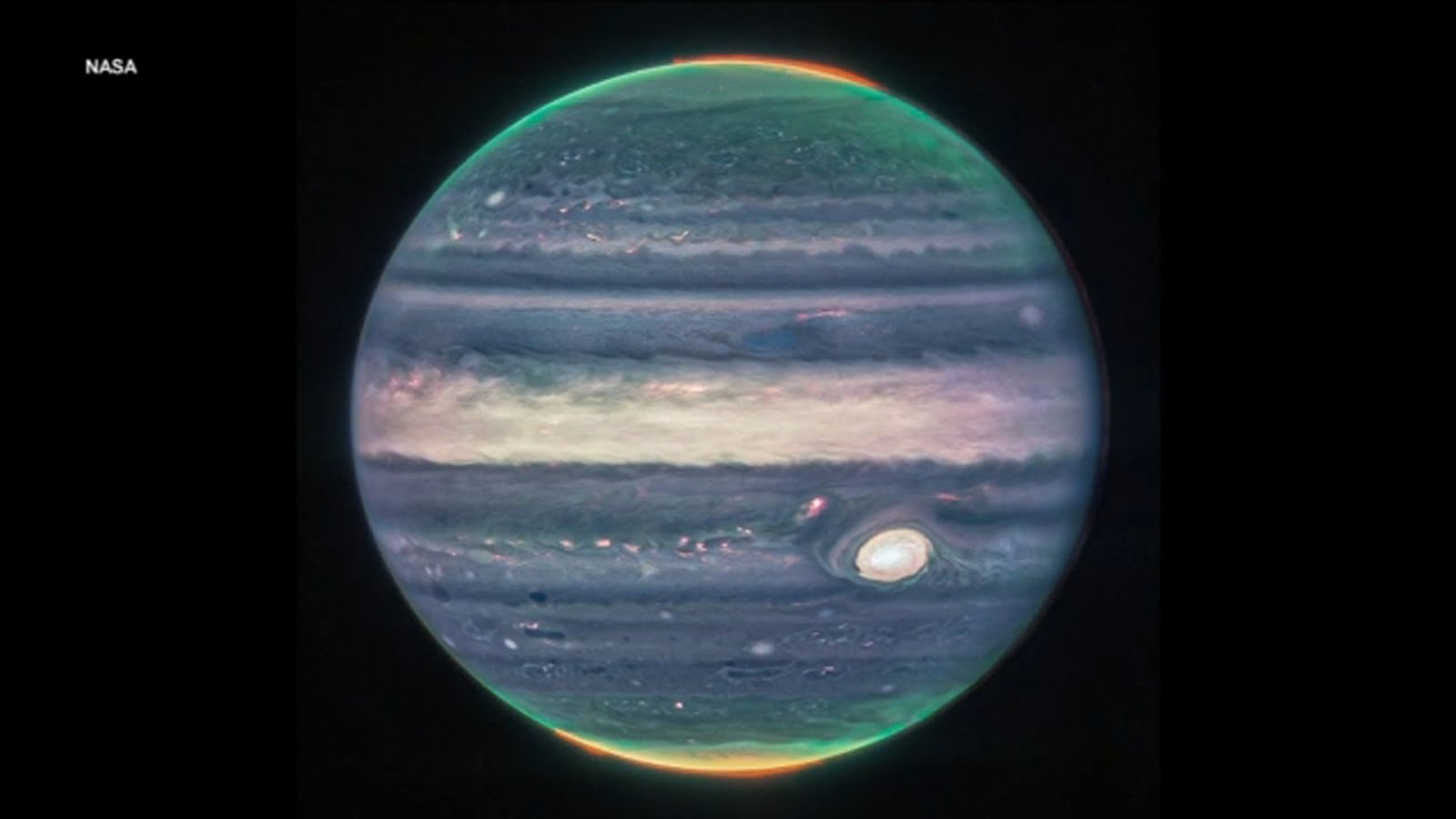The world’s newest and largest space telescope reveals small moons and Jupiter’s auroras
The largest and newest space telescope in the world is providing a new perspective on Jupiter, complete with auroras.
The images of the largest planet in the solar system were revealed by scientists on Monday.
The images were taken in July by the James Webb Space Telescope, providing first-ever views of Jupiter’s northern and southern lights as well as its whirling polar haze. Alongside innumerable smaller storms, Jupiter’s Great Red Spot, a storm large enough to consume Earth, stands out prominently.
A wide-field image that displays the planet’s weak rings and two tiny moons against a sparkling background of galaxies is especially striking.
We have never witnessed Jupiter in this way. Imke de Pater, a planetary scientist at the University of California, Berkeley, who assisted in leading the observations, said it was all “pretty remarkable.”
She also stated, “To be honest, we hadn’t really expected it to be this wonderful.
The U.S.-French study team claims that the infrared photos were falsely tinted in blue, white, green, yellow, and orange to highlight the features.
The $10 billion replacement for the Hubble Space Telescope launched at the end of 2017 and has been exploring the cosmos in the infrared since the summer. With Webb, researchers aim to witness the creation of the cosmos.
peering all the way back to when the first stars and galaxies were forming 13.7 billion years ago.
The observatory is positioned 1 million miles (1.6 million kilometers) from Earth.
(FRANCE24)



